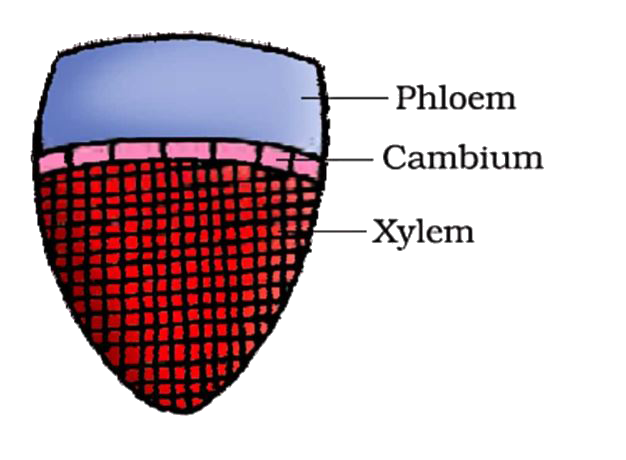Which of the following is a vascular cryptogam
(a) Marchantia
(b) Cedrus
(c) Equisetum
(d) Ginkgo
The correct Answer is:C
To determine which of the following is a vascular cryptogam, we need to understand the definitions of vascular plants and cryptogams.
Step 1: Understand Vascular Plants
Vascular plants are those that have a well-defined vascular system, which includes xylem and phloem.
- Xylem is responsible for transporting water and minerals from the roots to the rest of the plant.
- Phloem is responsible for transporting food produced by photosynthesis.
Step 2: Understand Cryptogams
Cryptogams are plants that reproduce via spores instead of seeds. The term "cryptogam" comes from the Greek words "crypto," meaning hidden, and "gam," meaning seed. These plants have concealed reproductive structures, which is why they do not produce visible seeds.
Step 3: Identify Vascular Cryptogams
The category of plants that are both vascular and cryptogams is known as pteridophytes. Pteridophytes include ferns, horsetails, and clubmosses, which reproduce via spores.
Step 4: Analyze the Options
Now, let's review the options provided:
1. Mercantia - This belongs to the bryophytes, which are non-vascular plants. Therefore, it is not a vascular cryptogam.
2. Cetrus - This is a gymnosperm, which is a seed-producing plant. Hence, it is also not a vascular cryptogam.
3. Equisetum - This is a pteridophyte, which is both vascular and a cryptogam. Therefore, this is a correct answer.
4. Ginkgo - This also belongs to gymnosperms and is not a vascular cryptogam.
Conclusion
The correct answer is Equisetum, as it is a vascular cryptogam.
---
Vascular plants are those that have a well-defined vascular system, which includes xylem and phloem.
- Xylem is responsible for transporting water and minerals from the roots to the rest of the plant.
- Phloem is responsible for transporting food produced by photosynthesis.
Cryptogams are plants that reproduce via spores instead of seeds. The term "cryptogam" comes from the Greek words "crypto," meaning hidden, and "gam," meaning seed. These plants have concealed reproductive structures, which is why they do not produce visible seeds.
The category of plants that are both vascular and cryptogams is known as pteridophytes. Pteridophytes include ferns, horsetails, and clubmosses, which reproduce via spores.
Now, let's review the options provided:
1. Mercantia - This belongs to the bryophytes, which are non-vascular plants. Therefore, it is not a vascular cryptogam.
2. Cetrus - This is a gymnosperm, which is a seed-producing plant. Hence, it is also not a vascular cryptogam.
3. Equisetum - This is a pteridophyte, which is both vascular and a cryptogam. Therefore, this is a correct answer.
4. Ginkgo - This also belongs to gymnosperms and is not a vascular cryptogam.
The correct answer is Equisetum, as it is a vascular cryptogam.
Topper's Solved these Questions
- PLANT GROWTH AND DEVELOPMENT AND PLANT MOVEMENTS Book:TRUEMEN BIOLOGY ENGLISHChapter:PLANT GROWTH AND DEVELOPMENT AND PLANT MOVEMENTS Exercise:MULTIPLE CHOICE QUESTIONS
Explore 158 Videos
- Plant Morphology & Reproduction Book:TRUEMEN BIOLOGY ENGLISHChapter:Plant Morphology & Reproduction Exercise:ASSERTION AND REASON
Explore 64 Videos
Similar Questions
Knowledge Check
Which of the following is not characteristic of all divisions of vascular plants ?
ADevelopment of seedsBAn alternation of generationsCDifferentiation into roots, stems, and leavesDXylem and phloem for transporting materials between roots and leaves
Which one of the following is a non- vascular embryophyte ?
View SolutionWhich of the following possess vascular tissues but lacks seeds ?
View Solution
In which of the following, this kind of vascular bundle can be seen ?
View SolutionWhich of the following types of vascular bundles are found in a monocot root ?
View SolutionWhich of the following is not related to vascular cambium
View SolutionWhich one of the following is not characteristic of all divisions of vascular plants?
View SolutionWhich of the following is not true for the vascular bundles of monocotyledonous stems?
View Solution
